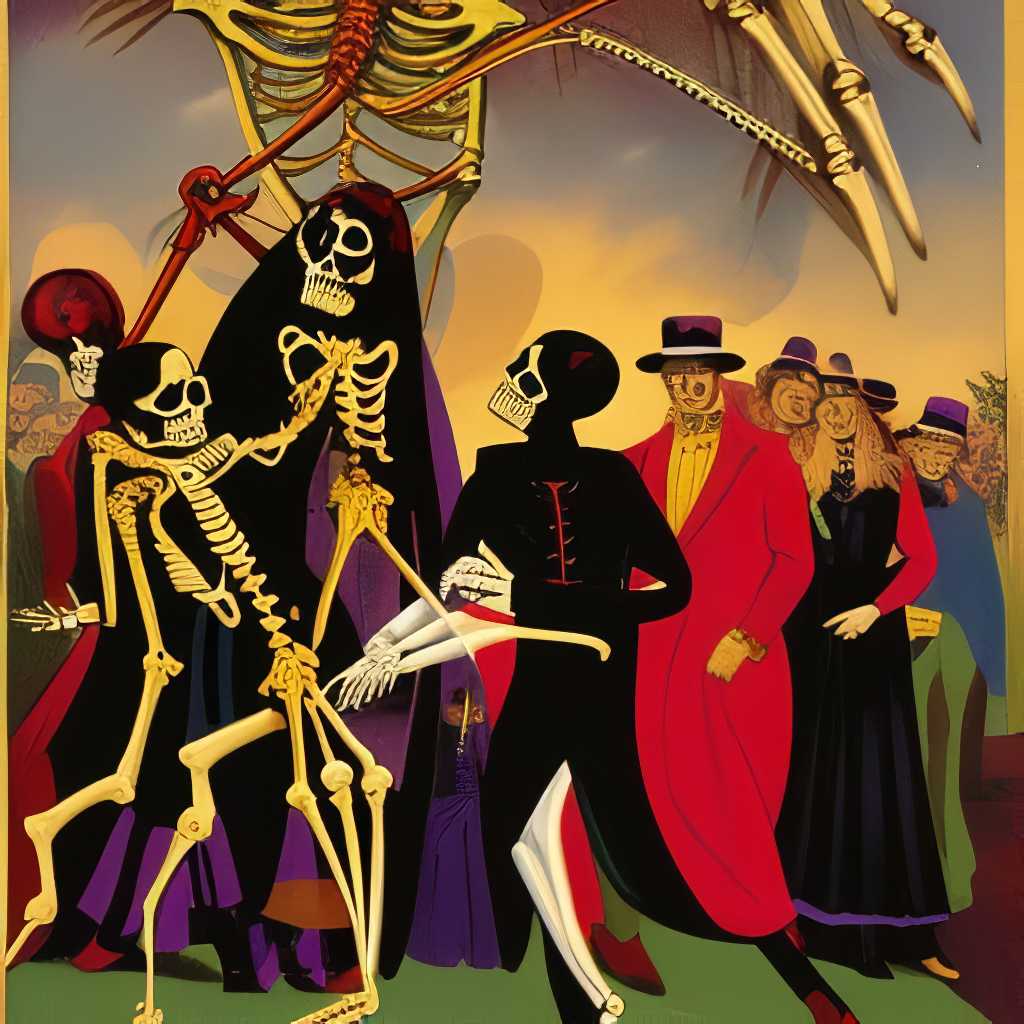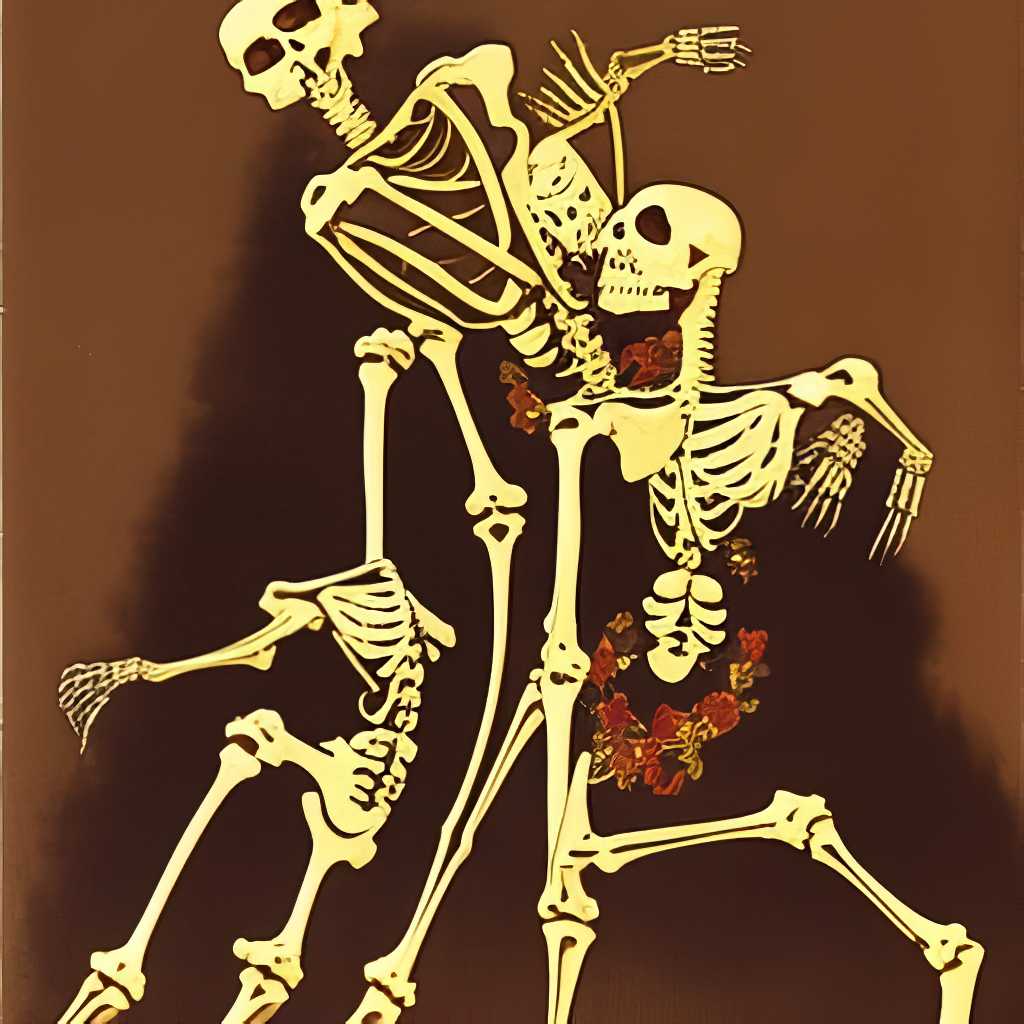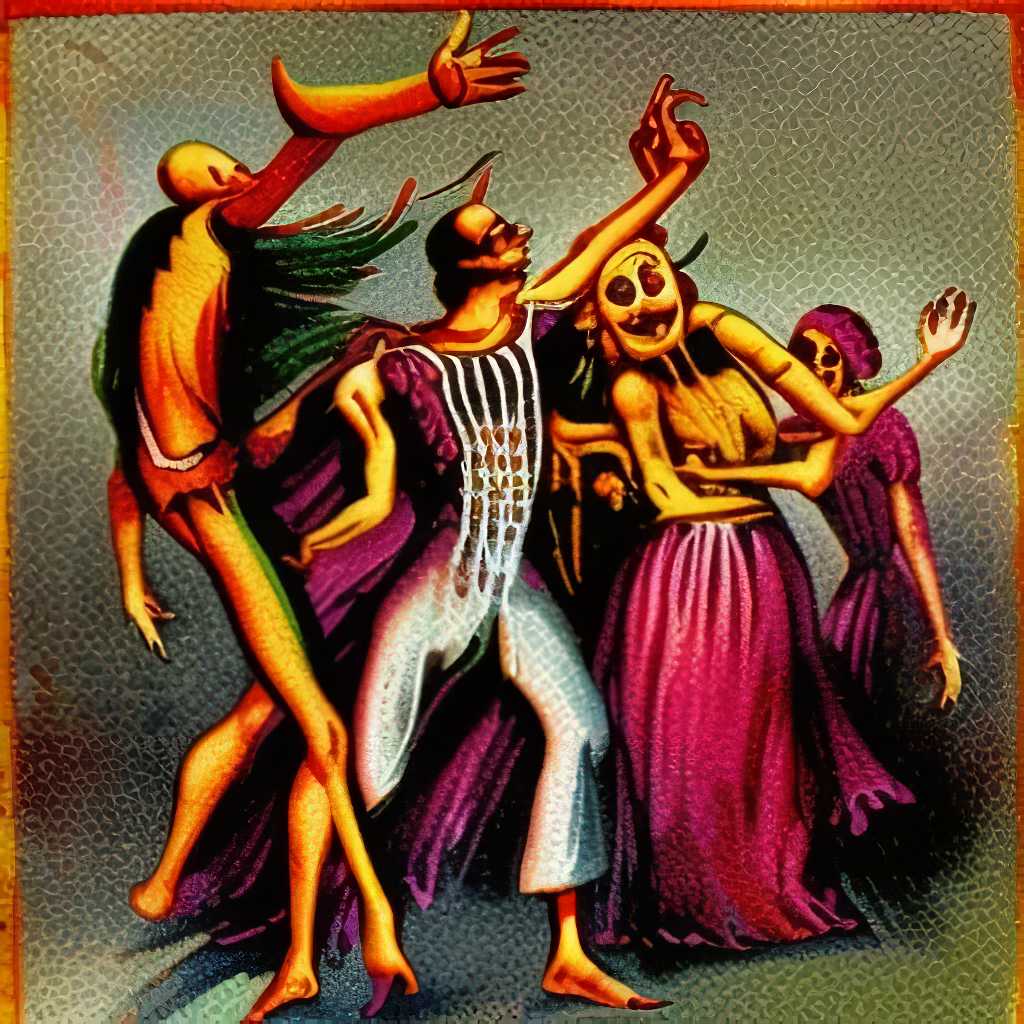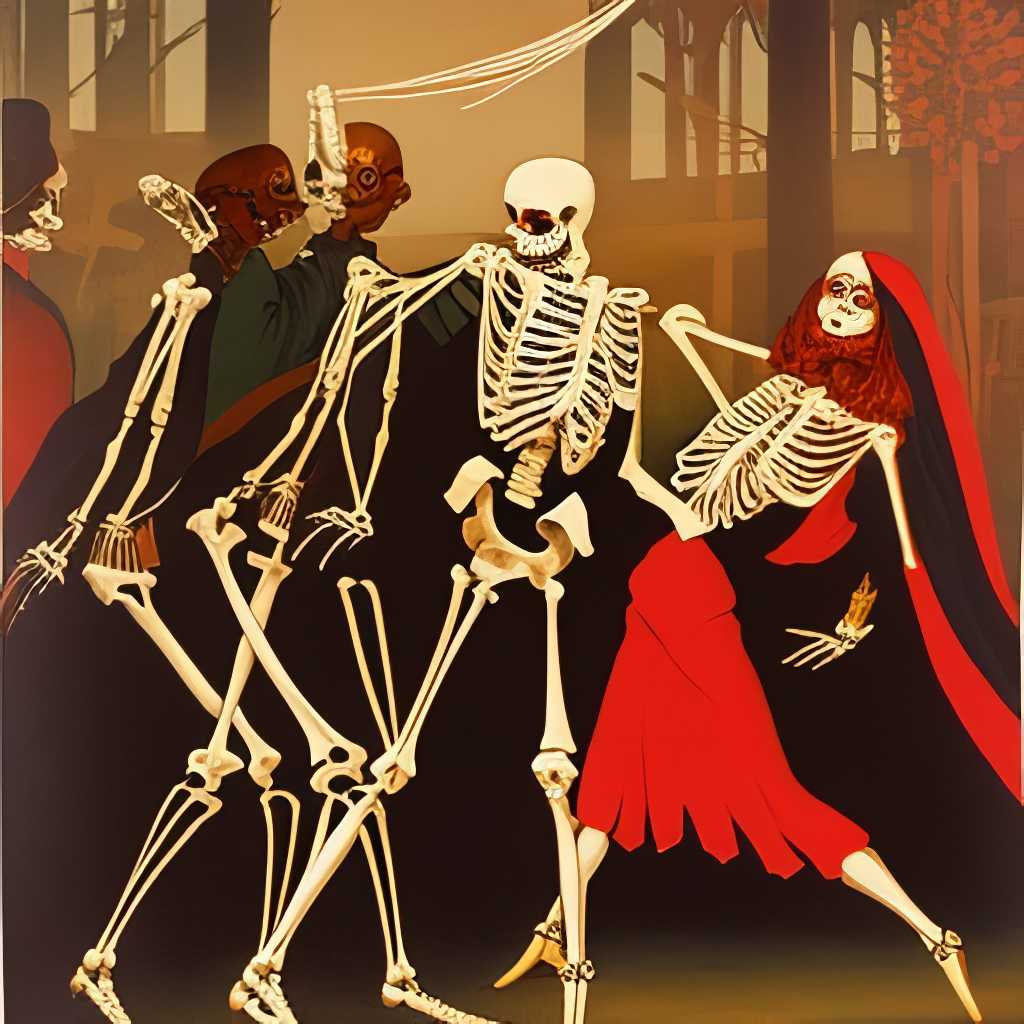
The Dance of Death, also known as the Danse Macabre, is a medieval allegory that has captivated audiences for centuries. It is a representation of death as a skeletal figure leading a procession of people from all walks of life, from kings and queens to peasants and beggars. The Dance of Death has been portrayed in various forms of art and literature, from frescoes in ancient cemeteries to modern films and video games. While the Dance of Death may seem macabre and grim, it holds a deep symbolic meaning that reflects humanity's relationship with death and mortality. In this article, we will explore the symbolism of the Dance of Death and attempt to decode its meaning, shedding light on the profound message it carries for all of us.
The Dance of Death originated in medieval Europe, during a time when the Black Death pandemic ravaged the continent. The Dance of Death was a way to cope with the overwhelming mortality rate caused by the plague, as well as a warning against the dangers of sin and excess. The Dance of Death motif began to appear in art and literature in the 14th century, with the earliest known examples being frescoes in the Cemetery of the Holy Innocents in Paris, France. These frescoes depicted the Dance of Death as a procession of people being led to their inevitable demise by a skeletal figure, often accompanied by verses warning of the fleeting nature of life and the inevitability of death. The motif was later popularized by artists such as Hans Holbein, whose series of woodcuts depicting the Dance of Death became widely popular in the 16th century. The Dance of Death has continued to be a popular motif throughout history, appearing in various forms of art and literature in different cultures around the world.
The Dance of Death is rich in symbolism, representing humanity's relationship with death and mortality. One of the most significant symbols in the Dance of Death is the portrayal of death as the ultimate equalizer. In the Dance of Death, death comes for everyone, regardless of their status, wealth, or power. This symbolizes the inherent equality of all people in death and the futility of striving for material gain or social status.
Another important symbol in the Dance of Death is the inevitability of death and the impermanence of life. The skeletal figure leading the procession is a reminder that death is always present, and life is fleeting. This symbol is a warning against complacency and encourages people to live life to the fullest, as they never know when death may come.
The Dance of Death also portrays death as a guide and companion, leading the procession of people to the afterlife. This symbolizes the idea that death is not something to be feared, but rather an essential part of the natural cycle of life and death.
Finally, the Dance of Death carries a message about the dangers of hubris and excess. The inclusion of kings, queens, and other powerful figures in the procession is a warning against the dangers of arrogance and the belief that one is above mortality. This symbol encourages humility and encourages people to live their lives with modesty and respect for others.
In sum, the Dance of Death's symbolism serves as a reminder of our mortality and encourages us to live our lives with meaning and purpose. It also warns against the dangers of arrogance and the belief in one's own invincibility.

The Dance of Death has been depicted in various forms of art and literature throughout history. Here, we will analyze three specific examples of the Dance of Death and explore the unique ways in which each artist or writer has used the motif to convey their message.
The Danse Macabre frescoes in Paris's Cemetery of the Holy Innocents are among the earliest known examples of the Dance of Death motif. These frescoes depict a procession of people from all walks of life, including kings, peasants, and clergy, being led to their death by a skeletal figure. The accompanying verses warn of the fleeting nature of life and the inevitability of death. These frescoes served as a powerful reminder of the mortality of all people and encouraged viewers to live their lives with humility and purpose.
Hans Holbein's Dance of Death woodcuts, created in the 16th century, are among the most famous examples of the Dance of Death. Holbein's woodcuts depict the Dance of Death as a procession of people being led to their death by a skeletal figure, accompanied by verses warning of the dangers of excess and the inevitability of death. Holbein's woodcuts are notable for their intricate details and their ability to convey complex emotions through the facial expressions and body language of the characters.
The Dance of Death has also been depicted in literature, including poems and plays. One famous example is the 15th-century poem "Danse Macabre," which describes a procession of people being led to their death by death himself. The poem's verses warn of the dangers of sin and the fleeting nature of life, urging readers to live their lives with virtue and morality. Another example is the 20th-century play "The Dance of Death" by August Strindberg, which depicts a married couple's descent into madness and destruction. The play uses the Dance of Death motif to explore themes of mortality, morality, and the destructive power of human relationships.
In conclusion, the Dance of Death has been depicted in various forms of art and literature throughout history, each with its unique take on the symbolism and message of the motif. Whether through frescoes, woodcuts, poems, or plays, the Dance of Death serves as a powerful reminder of the inevitability of death and the importance of living life with purpose and morality.

While the Dance of Death originated in medieval Europe, the motif has continued to resonate with contemporary audiences and is still featured in modern art and popular culture.
One example of the Dance of Death's continued influence is in contemporary art. Many artists have incorporated the motif into their work, often using it to explore themes of mortality, spirituality, and the human condition. For example, contemporary artist Damien Hirst's sculpture "Death is Irrelevant" features a life-sized human skeleton holding a scythe, standing atop a large medicine cabinet. The piece comments on the inevitability of death in modern society and our attempts to ignore or delay it through medicine and technology.
The Dance of Death has also been featured in popular culture, from movies and TV shows to music and video games. One example is the video game "MediEvil," which features a skeletal knight named Sir Daniel Fortesque who battles an evil sorcerer to save his kingdom. The game incorporates many elements of the Dance of Death, including skeletal figures and a sense of inevitability and mortality.
Finally, the Dance of Death continues to be relevant in contemporary discussions about death and dying. Many people today are exploring alternative approaches to death, such as natural burials, green funerals, and death-positive movements. These movements often embrace the Dance of Death's themes of acceptance and natural cycles of life and death.
In conclusion, the Dance of Death's symbolism and message have continued to resonate with contemporary audiences, with many artists, writers, and cultural creators incorporating the motif into their work. The Dance of Death remains a powerful reminder of our mortality and encourages us to live our lives with purpose and acceptance.

The Dance of Death has been a significant motif throughout history, reminding people of their mortality and the importance of living life with purpose and morality. The symbol has been depicted in various forms of art and literature, each with its unique take on the message and symbolism of the Dance of Death. From medieval frescoes to contemporary art and popular culture, the Dance of Death continues to resonate with contemporary audiences.
Through our analysis of the historical origins of the Dance of Death, its symbolism, specific examples, and its presence in contemporary culture, we can see the enduring power and relevance of this motif. Whether it is through art, literature, or cultural movements, the Dance of Death continues to remind us of our shared humanity and the fleeting nature of life.
In the end, the Dance of Death is not only a symbol of mortality, but also a celebration of life. It encourages us to appreciate the time we have, to live our lives with purpose and meaning, and to embrace the natural cycles of life and death. As such, the Dance of Death serves as a poignant and timeless reminder of our shared humanity and the importance of living a meaningful life.
Updated March 11, 2023